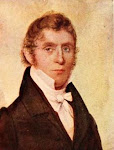While reading Reverend Parker's 1883 history of the American abolitionist movement,
"Acts of the Anti-Slavery Apostles" this week, I came across an arresting quote:
When some discerning Romans saw how many statues were reared in their city to persons of only indifferent merit, while Cato, one of their wisest and best, had none, they wondered. But the great man had answered the question beforehand:
"Better that posterity should ask why Cato has not a monument, than why he has."
That anecdote seemed to put into focus some half-formed ideas I had been thinking about, on what I've learned since I started blogging about the scourge of modern-day slavery. From all the reading and researching, come two lessons learned.
Lesson One: The numbers involved are no longer quite so abstract.
The daily deluge of news stories that
Google Alerts sends into my mailbox has made me much more able to visualize the mathematical abstraction of the number 27,000,000. (That's the calculated number of human beings undergoing various forms of enslaved labor,
today, right now.)
It's a staggering total, but I think its true horror is hidden by our inability to comprehend such figures in concrete forms. It's a number outside of our experience. We've been in crowds of dozens of people at parties, so that's a number we "see" quite clearly. Same with hundreds, or thousands, even tens of thousands; we've all been to theaters, churches and sports stadiums, so larger numbers like these are within reach of our imagination. But "millions"? What does a "million people" look like? It's inconceivable.
If you point to my neighbor's lawn, and tell me that there are 7 million blades of grass contained within it, but quickly confess that you were only kidding, that in truth the number was actually almost four times that amount, at
27 million... I'd be unable to feel deceived: I simply can't put a mental picture to such numbers. You might as well have said there were 27
billion blades of grass on that lawn. It's an abstraction that has no shape.
Well, after two months' worth of daily deposits of stories of modern day slavery, from all around the world, such previously unimaginable numbers start to take clear shape indeed. When every day's revelations include stories of
3 teenage sex slaves found in Texas,
54 Burmese laborers rescued in Thailand,
200 children liberated in India, and more, these numbers add up over time like a crowd emerging out of a fog, until the immensity of a number like one million starts to assume a ghastly form.
When one is too many, when twenty is monstrous, the sound of
millions of chains is deafening. May the day soon come when this sound is heard by more, by all, so that by our numbers we can gather the will and the strength to break these chains.
Lesson two has to do with another number: the delightful surprise in discovering the incredible number of heroes who succeed in rescuing men, women and children from enslavement on a daily basis.
As it says in my blog's sidebar, it was through reading the journals of obscure 1820s-'30s abolitionist Benjamin Lundy that I was motivated to start chronicling the various stories I was finding online about the scope of modern-day slavery. Lundy's was a solo voice when he began his abolitionist work, not one in a choir; Lundy's journey started off as a solitary walk, not marching at the front of a crowd; yet he persevered on, despite the unimaginable odds stacked against him.
How much less hopeless things must be today! I had no idea that there are
so many heroes who toil day after day to identify, to rescue, and to help, those slaves shackled to modern-day chains. (Please visit them in my "Breaking The Chains Today" link section in the sidebar!)
Friend Lundy had to stand in opposition to his own government, in addition to the slave-owners and slave-traders; his mission placed him against his own society. Today, in theory, there are no nations that still legalize slavery. The slave traders are criminals, not businessmen. The odds are on our side, that an end can be conceived, a day can now come that the chains of slavery may be somehow broken, and that all may taste freedom. The victories of today's abolitionists need to be heard, if we are to find the most valuable resource needed in the fight against slavery: hope. The hope that this second lesson brings almost balances out the despair brought by the first.
It's been the greatest surprise I've received since I began my research, because these heroes tend to be just as hidden to our eyes as the evil they fight against. Why is such goodness kept such a secret?
Where are the honors, for example, for the wonderful
team of doctors led by Dr. Jeff Barrows who are headed to Nicaragua to care for the rescued former prostitutes sheltered at the
House Of Hope?Where are the medals for heroes like Charlotte Salasky for her work in helping rescued sex slaves in Cambodian shelters organized by the Somaly Mam Foundation, as they provide medical attention and vocational training for their young charges?
Where are the red carpets for the Australian former police officer whose quick-thinking rescued a 10-year old and 14-year old Vietnamese girl from the nightmare of sexual exploitation?
Where are their monuments?
In the smiles of those they've served, that's where; smiles animated by the previously unimagined possibility of better tomorrows.
 19th century French abolitionist Senator Victor Schoelcher is indirectly in the news this week, as France's city of Nantes is undertaking the construction of a large memorial near a pedestrian footbridge named in his honor.
19th century French abolitionist Senator Victor Schoelcher is indirectly in the news this week, as France's city of Nantes is undertaking the construction of a large memorial near a pedestrian footbridge named in his honor.







